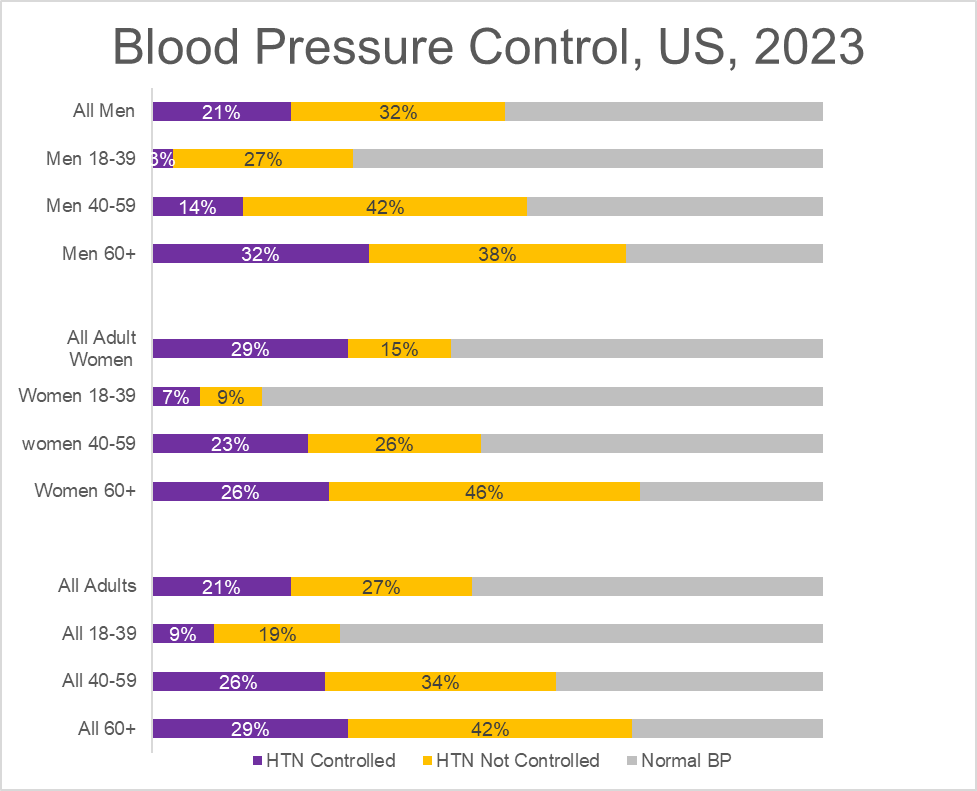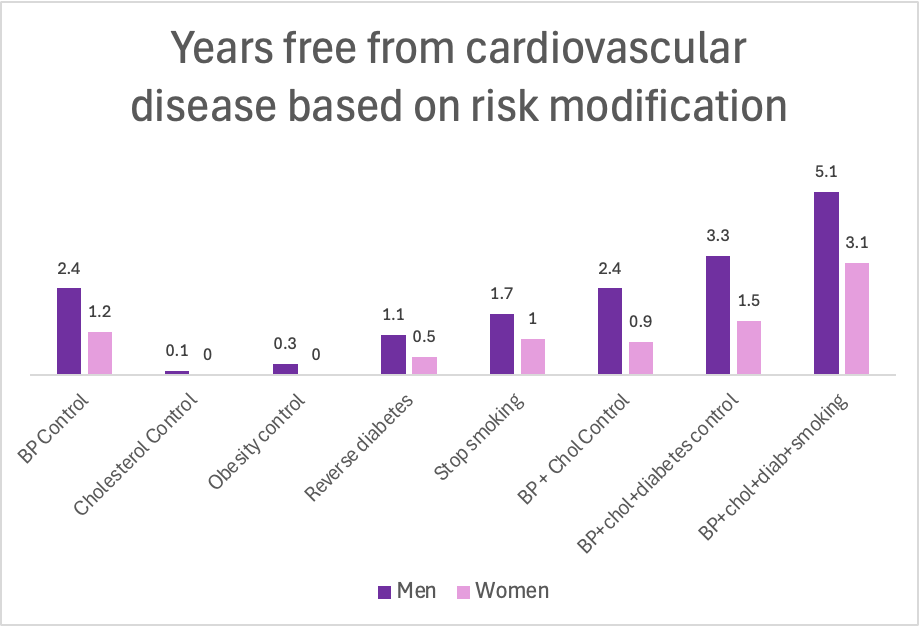Source: Fryar, et al CDC October, 2024. BP control defined as last BP <130/<80
Hypertension is so common in the U.S. that a majority of those ages 40 and over (60%) have high blood pressure, defined as blood pressure that is equal or over 130 systolic and 80 diastolic However most adults with hypertension are not taking medication to lower their blood pressure, and many who are on medication are not taking enough medicine (or taking it regularly enough) to get their blood pressure to “normal” levels to reduce their cardiovascular risk.
Researchers in New England Journal of Medicine last month used a large global database (over two million people) to estimate that 24% of women and 38% of men would have cardiovascular disease during their lifetimes, and that five risk factors (high blood pressure, high cholesterol, obesity, diabetes, and smoking) represent about half of cardiovascular risk. The remaining risk is likely due to genetics, environmental exposures, and possibly infections. The researchers found that women with all five risk factors at age 50 lived an average of 14.5 fewer years compared to those with none of these risk factors, and men with all five risk factors lost 11.8 years of life. The researchers calculated how many years free of cardiovascular disease and how many extra years of life people would gain by modifying one or more of the risk factors. They found that stopping smoking at age 55 was associated with the largest gain in years of life, and controlling blood pressure adequately even at age 50 led to the largest decrease in cardiovascular disease. Controlling cholesterol and obesity offered the smallest benefits, although if addressing obesity led to blood pressure or diabetes control, the benefit would have been attributed to that risk factor.
Source:Magnussen, et al NEJM April, 2025
Source: Magnussen, et al NEJM April, 2025
Implications for employers:
High blood pressure is very common, and most of those with hypertension do not achieve normal blood pressure readings.
A diet that is low in salt (sodium) and includes more unprocessed food and regular exercise can help lower blood pressure, but many with high blood pressure (including me!) require medications to avoid excess risk of cardiovascular disease. Employers can offer healthy food at company cafeterias and make it easy for employees to exercise close to the workplace.
Now that the U.S. adult smoking rate is low (11.6% among adults), improving blood pressure control, even in middle age, could help reduce both cardiovascular disease and death. Employers can continue to support smoking cessation programs, too.
Employers can ask their carriers to report on blood pressure control in their populations. This is a standard measure of the National Committee for Quality Assurance (NCQA), but carriers often fail to report this metric because it requires chart review or electronic health record analysis.
Thanks for reading. You can find previous posts in the Employer Coverage archive
Please subscribe, “like” share this newsletter with friends and colleagues. Thanks!





